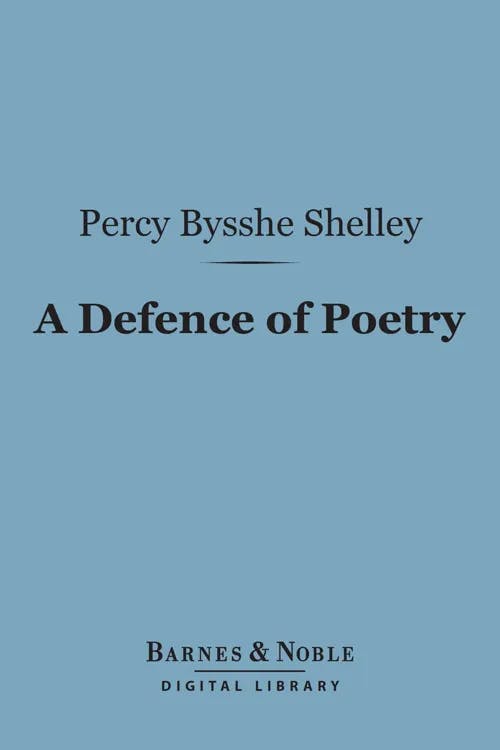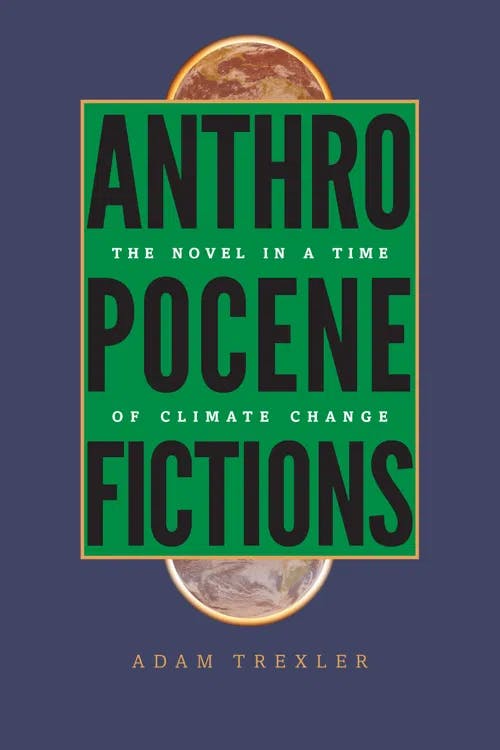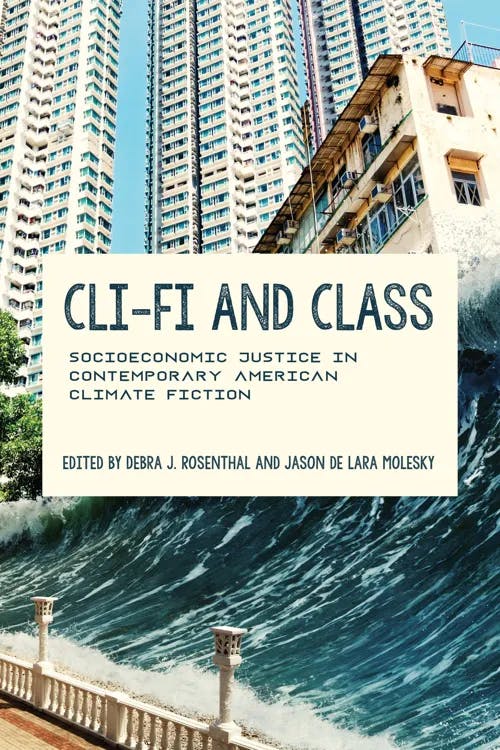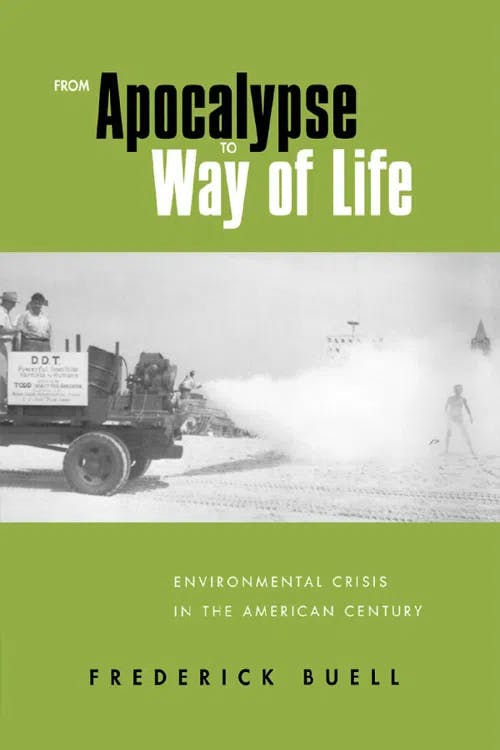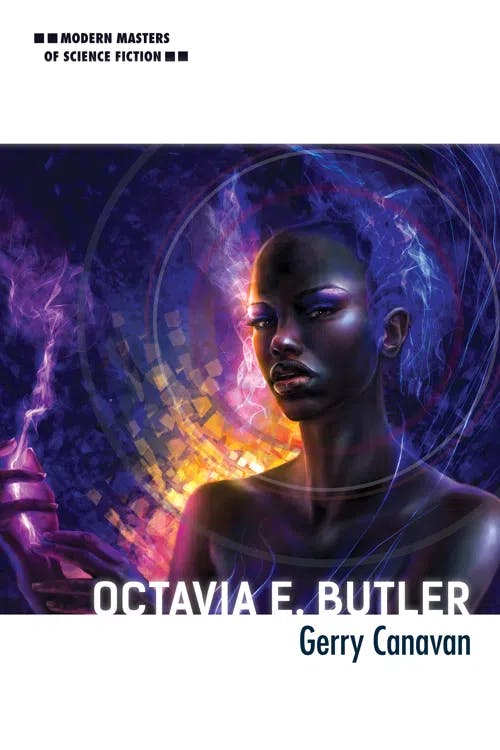What is Climate Fiction?
MA, English Literature (University College London)
Date Published: 21.02.2024,
Last Updated: 21.02.2024
Share this article
Defining climate fiction
In simple terms, climate fiction is a form of literature which imaginatively engages with climate change. As Antonia Mehnert summarizes in Climate Change Fictions,
Climate change fiction—literature dealing explicitly with anthropogenic climate change—gives insight into the ethical and social ramifications of this unparalleled environmental crisis, reflects on current political conditions that impede action on climate change, explores how risk materializes and affects society, and finally plays an active part in shaping our conception of climate change. It thus serves as a cultural-political attempt and innovative alternative of communicating climate change. (2016)
Antonia Mehnert
Climate change fiction—literature dealing explicitly with anthropogenic climate change—gives insight into the ethical and social ramifications of this unparalleled environmental crisis, reflects on current political conditions that impede action on climate change, explores how risk materializes and affects society, and finally plays an active part in shaping our conception of climate change. It thus serves as a cultural-political attempt and innovative alternative of communicating climate change. (2016)
Often, climate fiction aims to inform and shape our response to the climate crisis; providing us with a vivid and visceral depiction of the issues that face us, and the various permutations of our potential responses to them. Some works engage with climate change’s impact on society in the present, while others speculate on a range of possible future scenarios which vary depending on the actions that are taken (or not). These speculative visions may be utopian or (more commonly) dystopian in nature, and there is a lot of crossover with speculative fiction here. Climate fiction is often shortened to “cli-fi,” which echoes these sci-fi associations, but the lines between climate fiction and more “realist” fiction have become increasingly blurred in recent years. Due to humanity’s significant impact upon the planet itself, many argue that we have already entered a new ecological era — the Anthropocene. Climate change is already having a very real impact on communities across the world, and climate fiction is increasingly engaging with these disasters of the present and the very near future. To take one example, Kim Stanley Robinson’s The Ministry for the Future (2020) explores the creation of an international body to advocate for the rights of future generations who will be affected by the climate crisis. Alongside such big-picture maneuvering, Robinson depicts the searing consequences of climate change that already exist for ordinary people in his near-future setting:
Every building had a clutch of desperate mourners in its entryway, waiting for ambulance or hearse. As with coughing, it was too hot to wail very much. It felt dangerous even to talk, one would overheat. And what was there to say anyway? It was too hot to think. Still people approached him. Please sir, help sir. (2020)
Can climate fiction save the world?
The crucial question underlying climate fiction is: can it actually have a meaningful impact on the climate crisis? Can climate fiction change the world? The wider question of literature’s purpose is also relevant here; part of the well-trodden debate over the degree to which literature can (or has to) effect practical change in the world. One of the most famous interventions in this area, for example, is Percy Bysshe Shelley’s A Defence of Poetry, which he wrote in 1821. Among his many and varied arguments, here, Shelley argues that
[Poetry] awakens and enlarges the mind itself by rendering it the receptacle of a thousand unapprehended combinations of thought. Poetry lifts the veil from the hidden beauty of the world, and makes familiar objects be as if they were not familiar [...]. (1821, [2011])
Percy Bysshe Shelley
[Poetry] awakens and enlarges the mind itself by rendering it the receptacle of a thousand unapprehended combinations of thought. Poetry lifts the veil from the hidden beauty of the world, and makes familiar objects be as if they were not familiar [...]. (1821, [2011])
Because of this, Shelley argues that poetry expands our empathy: “The great instrument of moral good is the imagination” (1821, [2011]). Shelley’s famous conclusion is that, due to their power, “Poets are the unacknowledged legislators of the world” (1821, [2011]).
The relevance of Shelley’s arguments for climate fiction is clear to see: when we are faced with the challenge of communicating the reality of the climate crisis, and getting people to care about it (and about those who are affected), imaginative engagements with these issues through climate fiction may be a powerful way of inspiring the profound and widespread empathy that is required for change. Climate fiction brings an immediacy which other mediums may struggle to achieve by deeply immersing the reader in the lived experiences of characters affected by the crisis. As Adam Trexler argues in Anthropocene Fictions,
Both documentaries and nonfiction writing are popular sites for exploring climate science and politics and for describing Earth’s future. Often, these works are more direct in their warnings, but they also lack the novel’s capacity to interrogate the emotional, aesthetic, and living experience of the Anthropocene. (2015)
Adam Trexler
Both documentaries and nonfiction writing are popular sites for exploring climate science and politics and for describing Earth’s future. Often, these works are more direct in their warnings, but they also lack the novel’s capacity to interrogate the emotional, aesthetic, and living experience of the Anthropocene. (2015)
With its power to immerse us in a range of human experiences, climate fiction plays a valuable role in expanding our empathetic (as well as intellectual) appreciation of climate change and its impact. Fiction is a form of communication with the power to flesh out what can sometimes be abstract climate calculations; bringing science and economics into the immediate realm of the human.
While such mediums as documentaries and nonfiction are clearly also valuable tools, climate fiction — because it is fiction — has the freedom to imaginatively roam where nonfiction cannot. Instead of replacing other forms of communication about climate change, climate fiction acts as a supplemental form with its own unique advantages. As Gregers Andersen argues, climate fiction’s speculative powers can play a crucial role in actually allowing us to comprehend the scale of the crisis ahead:
climate fiction represents a vital supplement to the reports published by the United Nations Intergovernmental Panel on Climate Change (IPCC) because, by depicting humans in worlds resembling those forecast by the IPCC, climate fiction provides speculative insights into how it might be to feel and understand in such worlds. And these are basically insights we as contemporary humans cannot obtain anywhere else. (2019)
Gregers Andersen
climate fiction represents a vital supplement to the reports published by the United Nations Intergovernmental Panel on Climate Change (IPCC) because, by depicting humans in worlds resembling those forecast by the IPCC, climate fiction provides speculative insights into how it might be to feel and understand in such worlds. And these are basically insights we as contemporary humans cannot obtain anywhere else. (2019)
Climate fiction, then, engages our imagination and has the potential to transformatively expand what we know and think about climate change, both now and in the future. Mehnert argues that
The cultural realm offers a rethinking and reimagining of contemporary environmental problems such as climate change that not only intervenes in current debates but also fundamentally shapes them. [...] Especially in the case of climate change, with its characteristically prospective dimension, discursive realms that allow readers and viewers to affectively relate to the future are of utmost importance. (2016)
Climate fiction has the power to both explore and shape alternative futures which we are able to “affectively relate” to. But this is not the limit of climate fiction’s potential, as Mehnert continues,
Moreover, cultural texts pose ethical questions concerning not only the extent of the human impact on the planet but also decisions about who or what is saved or left to die in a climatically changed future. They therefore engage in a poetics of responsibility, that is, in a discussion about the responsibility humankind has toward its own actions. (2016)
As well as shaping our response to climate change in the first place, then, climate fiction can play a valuable role in guiding our moral compass along the way — reminding us of the lives that are affected, and engaging our empathy.
Key challenges
Climate fiction has great theoretical power, then, but changing the world in practice is not an easy task. Climate fiction’s ability to win hearts and minds, and inspire real change, is inhibited by a variety of challenges which also face the wider climate movement as a whole — including political intransigence, propaganda, lobbying campaigns, the tribalistic dividing lines that have sprung up around the topic, and perhaps human nature itself.
In addition to these, climate fiction is faced by its own particular set of challenges. One clear challenge is the sheer size of the climate crisis, with its dizzying array of ramifications. Faced with such a behemoth, where does climate fiction begin? In Anthropocene Fictions, Trexler runs through some of the problems that arise:
How can a global process, spanning millennia, be made comprehensible to human imagination, with its limited sense of place and time? What longer, historical forms aid this imagination, and what are the implications and limits of their use? What is impossible or tremendously difficult for us to understand about climate change? How does anthropogenic global warming challenge the political imagination or invite new organizations of human beings to emerge? How does living in the Anthropocene reconfigure human economies and ecosystems? (2015)
To take up the last point here, for example, climate fiction must consider climate change’s outsized impact on those from lower economic classes. As Mehnert notes,
Since the effects of global warming will be most severe for those who contribute the least to rising greenhouse gases, thinking about climate change also means thinking about the social inequalities it may aggravate. (2016)
Cli-fi and Class (2023) explores this issue in depth. As editors Debra J. Rosenthal and Jason de Lara Molesky explain,
the two fields—the climate humanities on one hand and environmental justice on the other—inhabit increasingly adjacent academic spaces. While their origins are very different, their trajectories are rapidly converging around the urgent question of how our socioeconomic system externalizes the harms of fossil-fueled hypergrowth and viscerally imposes them on the bodies and ecosystems of the marginalized poor. (2023)
Edited by Debra J. Rosenthal and Jason de Lara Molesky
the two fields—the climate humanities on one hand and environmental justice on the other—inhabit increasingly adjacent academic spaces. While their origins are very different, their trajectories are rapidly converging around the urgent question of how our socioeconomic system externalizes the harms of fossil-fueled hypergrowth and viscerally imposes them on the bodies and ecosystems of the marginalized poor. (2023)
Another challenge for climate fiction is that the depiction of apocalyptic futures may not be as effective in a world where (in many respects) the crisis has already begun. As Frederick Buell writes in From Apocalypse to Way of Life, “environmental crisis has become a regular part of the uncertainty in which people nowadays dwell” (2004). Using an early writer of climate fiction (Philip Wylie) as an example, Buell argues that
the stories that fill the newspapers today are, in some ways, more disturbing than anything Wylie imagined. Open water at the North Pole; state-sized chunks of ice shearing off Antarctic glaciers; four million acres of Alaskan forest dead as a probable result of climate change [...]; acute water shortages predicted for an increasing number of people in the world during the new century—stories like these make contemporary environmental problems seem graver and more soberingly real than anything in Wylie’s fiction. (2004)
Frederick Buell
the stories that fill the newspapers today are, in some ways, more disturbing than anything Wylie imagined. Open water at the North Pole; state-sized chunks of ice shearing off Antarctic glaciers; four million acres of Alaskan forest dead as a probable result of climate change [...]; acute water shortages predicted for an increasing number of people in the world during the new century—stories like these make contemporary environmental problems seem graver and more soberingly real than anything in Wylie’s fiction. (2004)
As the climate crisis has already become part of our everyday lives, Mehnert argues that “rupture and revelation no longer work as ‘wake-up tools’ in a world, in which complex processes pose constant threats to society” (2016). In “What Has Changed since Anthropocene Fictions?,” Adam Trexler notes that apocalyptic scenarios have been common in climate fiction from the beginning:
From the first novels in the early 1970s to around 2010, the vast majority of cli-fi understood global warming as a remote threat with a binary choice: humanity as a whole would either avert the crisis completely or suffer a dystopian or apocalyptic fate. Of course, this binary approach to a deferred climate change harbored significant conceptual errors, not least its presumption that the future would arrive as a disastrous moment rather than a long series of painful, unevenly distributed impacts. (Trexler, in Cli-Fi and Class, 2023)
In a world already struggling with the climate crisis, climate fiction arguably has to adapt if it wishes to maximize its impact; emphasizing that climate catastrophes are not just the preserve of the future, but that they are already here — unfolding before our eyes on a daily basis. Writing in 2004, Buell could already see encouraging signs in the new climate fiction that was emerging:
as never before, literature today represents deepening environmental crisis as a context in which people dwell and with which they are intimate, not as an apocalypse still ahead. The emergence of a body of literature of this sort is genuinely new. (2004)
The advantage of this approach is that “it blurs the boundaries between dilemmas in fiction and dilemmas still very much in progress in the surrounding world” (2004). Less encouragingly, however, Buell concludes that “this new literature of crisis silently awaits a meaningful collective response. It also fully acknowledges that this response may or may not come” (2004).
Key examples
As we have already glimpsed in the sections above, there is now a wide range of climate fiction available; with different authors favoring different approaches to portraying the climate crisis. When it comes to creating a timeline for climate fiction, Trexler argues that
The first novel directly concerned with an anthropogenic greenhouse effect seems to have been written in 1971 (Ursula Le Guin’s The Lathe of Heaven), and several others appeared in the late 1970s, but it wasn’t until the late 1980s that climate change novels began to be written in significant numbers. (2015)
Adam Trexler
The first novel directly concerned with an anthropogenic greenhouse effect seems to have been written in 1971 (Ursula Le Guin’s The Lathe of Heaven), and several others appeared in the late 1970s, but it wasn’t until the late 1980s that climate change novels began to be written in significant numbers. (2015)
Trexler argues that climate fiction really took off from the late 1980s onwards — reflecting the growing international awareness of climate change at this time:
Around the time of the formation of the Intergovernmental Panel on Climate Change (1988) and the Rio Earth Summit (1992), sustained, speculative explorations of climate change in fiction began to emerge. Through the 1990s, the body of novels grew, keeping pace alongside firming scientific evidence and increasing calls for international climate policy. (2015)
One of the most notable examples of climate fiction from this period is Octavia E. Butler’s award-winning The Parable of the Sower (1993), where environmental and social concerns intertwine in a post-apocalyptic USA:
[Butler] presents the country as a violent, lawless, socially and environmentally deteriorated zone of conflict in which the haves seek protection in their limousines in well-defended, less-polluted private spaces and the vastly larger numbers of the have-nots are left to fend for themselves in the dangerous, degraded commons. (Buell, 2004)
Although Butler’s depiction of this future society is fictional, the seeds are very much present in our own world. As Buell argues,
The Parable of the Sower extrapolates from issues the environmental justice movement has taken seriously and advances a nightmarishly critical portrait of where contemporary capitalist deregulation and privatization are now heading. (2004)
Butler’s concern with social inequality, here, is very much in keeping with her larger body of work:
In Butler’s novels power acts as it always does, rapaciously inflicting itself upon those without; it is the task of the powerless to turn the tables, or else survive in the gaps. (Gerry Canavan, 2016)
Gerry Canavan
In Butler’s novels power acts as it always does, rapaciously inflicting itself upon those without; it is the task of the powerless to turn the tables, or else survive in the gaps. (Gerry Canavan, 2016)
With the turn of the millennium, Mehnert argues that “an increasing number of writers started to take on and address [climate change] challenges, producing a growing repertoire of works for literary analysis” (2016). Margaret Atwood’s popular “MaddAddam” trilogy of dystopian novels began in 2003, for example, with Oryx and Crake.
The expansive list of writers who have now engaged with climate change include such “literary” luminaries as “T. C. Boyle, Jonathan Franzen, Maggie Gee, Barbara Kingsolver, Doris Lessing, Ian McEwan, Will Self, and Jeanette Winterson,” alongside “respected science fiction authors” such as “Piers Anthony, Paolo Bacigalupi, Octavia Butler, Ben Bova, Ursula Le Guin, Kim Stanley Robinson, and Bruce Sterling” (Trexler, 2015). (For a more detailed look at some of these writers and their works, the further reading section below includes recommendations from Perlego’s library.)
As climate change has continued to embed itself into the mainstream literary landscape, it has made its presence felt across a variety of genres, including:
comic novels, thrillers, action-adventure stories, romance novels, mysteries, stories about prehistoric climate change, multicultural novels, last man narratives, quasi-religious apocalypses, monster stories, and teen novels. (Trexler, 2015)
Climate fiction is making its presence felt in other formats, too — reflecting the far-reaching implications of climate change itself. To take just one example, the Snowpiercer series of graphic novels (1982–2015) depicts humanity’s struggle to survive after an environmental disaster has catapulted Earth into a new ice age. The remnants of humanity live in a strictly stratified society aboard a train, which must continually circumnavigate the frozen world. It has since been adapted into a film (2013, Bong Joon-ho) and TV series (2020–2024, Manson and Friedman). In the following scene from Bong Joon-ho’s film, the extreme cold is used as an instrument of totalitarian punishment — providing a glimpse of the interplay between social concerns and climate disaster:
Closing thoughts
Climate fiction has a valuable role in the wider context of both communicating the need for climate action, and shaping what that action may be. Through the advantages of fiction — with its power to not only inform us, but also engage our empathy and expand our imagination — climate fiction is a potentially powerful ally in the fight against climate change. This desire for change, Trexler argues, runs through the heart of climate fiction:
To date, nearly all Anthropocene fiction addresses the historical tension between the existence of catastrophic global warming and the failed obligation to act. Under these conditions, fiction offered a medium to explain, predict, implore, and lament. (2015)
As the climate crisis continues to accelerate, it remains an open question how successful climate fiction will actually be in inspiring the kind of change that is necessary. If nothing else, however, climate fiction’s expansive visions provide a valuable and consoling space for us to engage (emotionally, as well as intellectually) with our rapidly changing world.
Further reading on Perlego
Perlego’s study guides on ecocriticism, climate change, the Anthropocene, speculative fiction, posthumanism, utopia vs. dystopia, and Afrofuturism are particularly relevant, as well as:
Biopunk Worlds of Paolo Bacigalupi (2019) by Aleksandra Mochocka
Kim Stanley Robinson (2019) by Robert Markley
The Bloomsbury Handbook to Octavia E. Butler (2020), edited by Gregory J. Hampton and Kendra R. Parker
The Fiction of Margaret Atwood (2022) by Fiona Tolan
Words Are My Matter (2016) by Ursula Le Guin
Our Shared Storm: A Novel of Five Climate Futures (2022) by Andrew Dana Hudson
Law, Fiction and Activism in a Time of Climate Change (2019) by Nicole Rogers
Fire and Snow: Climate Fiction from the Inklings to Game of Thrones (2018) by Marc DiPaolo
What is climate fiction in simple terms?
What is an example of climate fiction?
Who are some climate fiction writers?
What are the best books on climate fiction?
Bibliography
Andersen, G. (2019) Climate Fiction and Cultural Analysis. Taylor and Francis. Available at: https://www.perlego.com/book/1379530/climate-fiction-and-cultural-analysis-a-new-perspective-on-life-in-the-anthropocene-pdf
Atwood, M. (2021) Oryx and Crake. Virago.
Buell, F. (2004) From Apocalypse to Way of Life. Taylor and Francis. Available at: https://www.perlego.com/book/1620842/from-apocalypse-to-way-of-life-environmental-crisis-in-the-american-century-pdf
Butler, O. (2019) The Parable of the Sower. Headline.
Canavan, G. (2016) Octavia E. Butler. University of Illinois Press. Available at: https://www.perlego.com/book/2383093/octavia-e-butler-pdf
Legrand, B., Lob, J., Bocquet, O., and Rochette, J.-M. (2021) Snowpiercer. Titan Comics.
Mehnert, A. (2016) Climate Change Fictions. Springer International Publishing. Available at: https://www.perlego.com/book/3494170/climate-change-fictions-representations-of-global-warming-in-american-literature-pdf
Oramus, D. (2023) (Eco)Anxiety in Nuclear Holocaust Fiction and Climate Fiction. Taylor and Francis. Available at: https://www.perlego.com/book/4143615/ecoanxiety-in-nuclear-holocaust-fiction-and-climate-fiction-doomsday-clock-narratives-pdf
Robinson, K. S. (2020) The Ministry for the Future. Orbit.
Rosenthal, D. and Molesky, J. L. (eds.) (2023) Cli-Fi and Class. University of Virginia Press. Available at: https://www.perlego.com/book/3855642/clifi-and-class-socioeconomic-justice-in-contemporary-american-climate-fiction-pdf
Shelley, P. B. (2011) A Defence of Poetry. Barnes & Noble. Available at: https://www.perlego.com/book/3714177/a-defence-of-poetry-barnes-noble-digital-library-pdf
Trexler, A. (2015) Anthropocene Fictions. University of Virginia Press. Available at: https://www.perlego.com/book/856651/anthropocene-fictions-the-novel-in-a-time-of-climate-change-pdf
Filmography
Snowpiercer (2013) Directed by Bong Joon-ho.
Snowpiercer (2020–2024) Created by Graeme Manson and Josh Friedman.
MA, English Literature (University College London)
Andy Cain has an MA in English Literature from University College London, and a BA in English and Creative Writing from Royal Holloway, University of London. His particular research interests include science fiction, fantasy, and the philosophy of art. For his MA dissertation, he explored the presence of the sublime in Shakespeare’s plays.


